Transfers and transactions in the TRON network
The TRON network is one of the most productive blockchain platforms that focuses on high-speed transfers of digital assets. With its native TRX token, unique consensus algorithm, and minimal fees, TRON transactions are ideal for daily operations in the Web3 environment.
In this article, we will take a detailed look at how transfers are organized in the TRON network, how to track and verify TRX transactions, and what tools and technologies ensure high speed and scalability of the network.
What are Tron transactions and how do they work?
TRON transactions are operations within the network, during which TRX tokens or other TRC-20 assets are exchanged or transferred between users. The system is based on the Delegated Proof of Stake (DPoS) mechanism. The algorithm allows maintaining a high transaction confirmation speed and a throughput of over 2,000 transactions per second.
Each transaction on the TRON network goes through several stages:
- Signing a transaction in the user's wallet;
- Sending a transaction to the network and distributing it among nodes;
- Verification of transactions by super representatives (SRs) and inclusion in the block;
- Confirmation and saving of the record in the TRON blockchain.
How to Verify a Transaction on the Tron Network: A Step-by-Step Guide
After sending cryptocurrencies on the TRON network, it is important to ensure that the TRX transaction has been processed successfully. Checking the status is possible through specialized blockchain explorers. The official explorer for TRON is Tronscan.org.
How to check via TronScan
To check a transaction in the official Tronscan browser, you need to:
- Go to the official website: https://tronscan.org;
- In the search bar, paste the hash of the completed transaction from the wallet or the address of the TRON wallet;
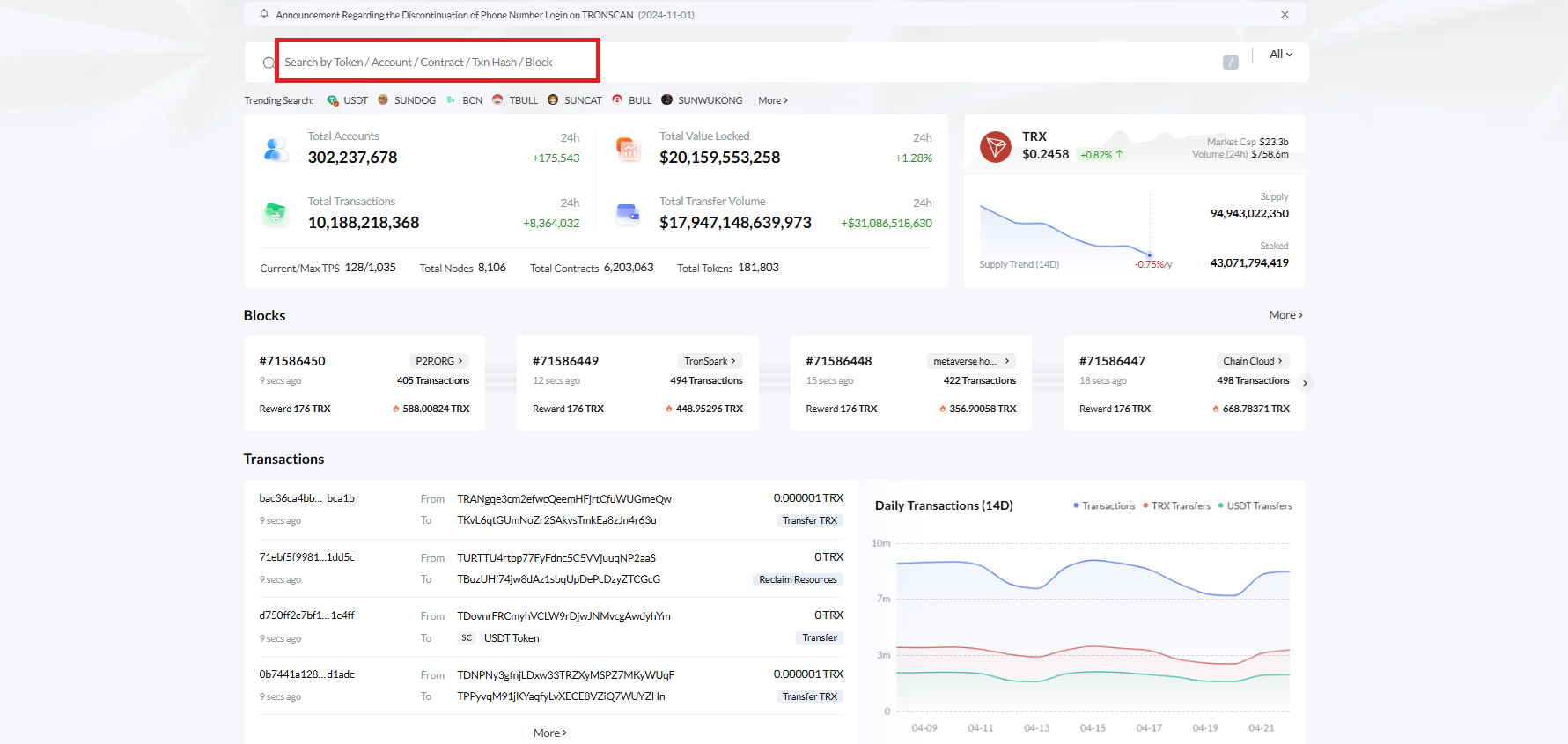
- Press “Enter”;
- In a new window, view all transaction details (transfer amount, commission amount, transaction status, transaction time, block number, sender and recipient addresses, used Energy, Bandwidth resources, etc.);
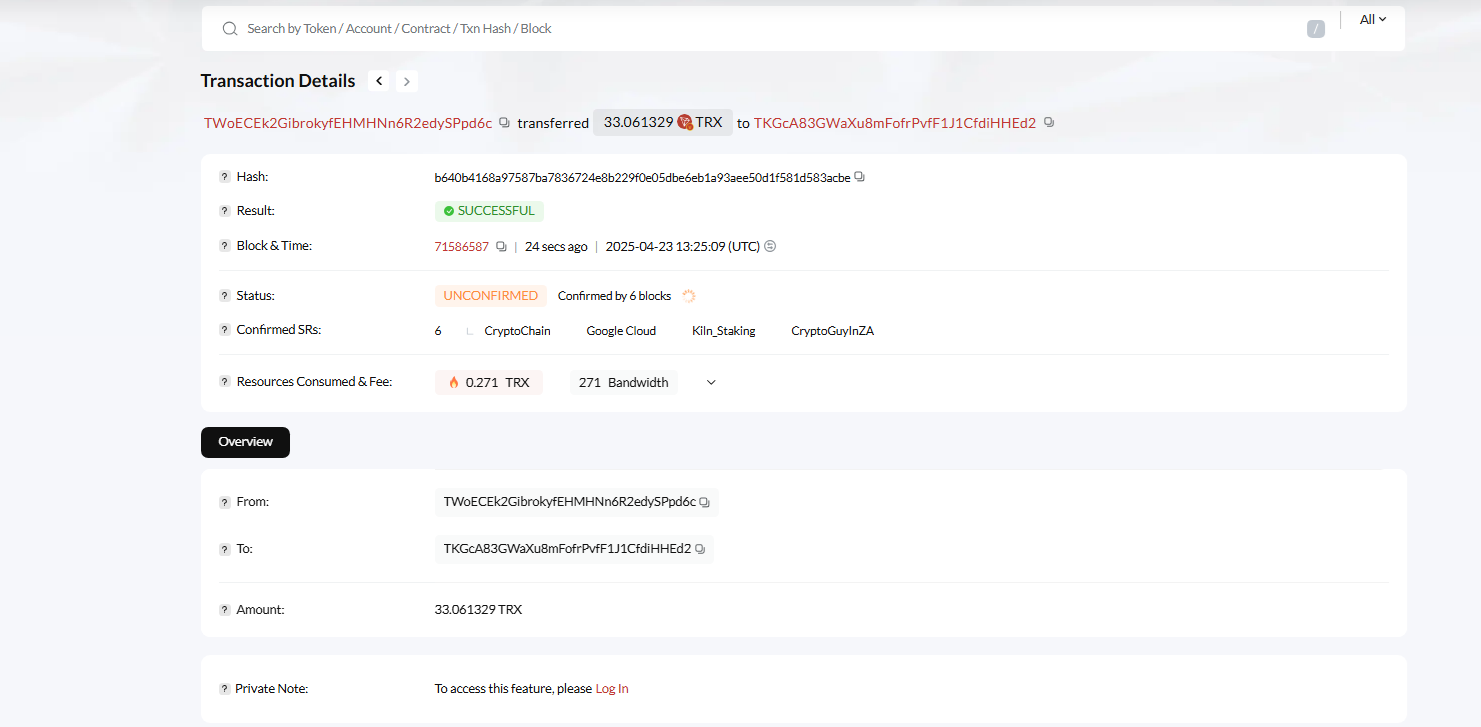
Through TronScan, you can check any transaction, wallet address at any time, even after several years, because the
data remains forever in the blockchain.
Speed and scalability of the Tron network for processing transfers
TRON is rightfully considered one of the most scalable blockchain networks. The system architecture allows it to process millions of transfers daily. According to official data, the total number of TRON transactions exceeds 10.13 billion.
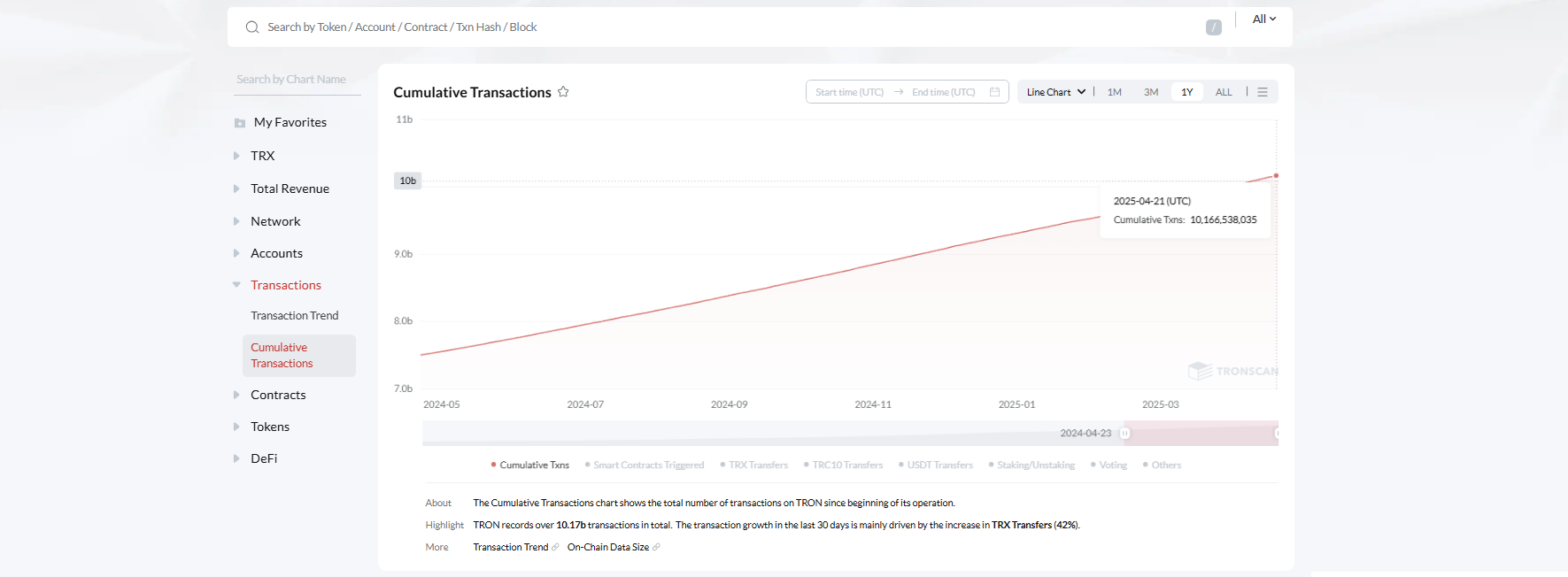
In addition, the number of TRX token holders is more than 175 million worldwide.
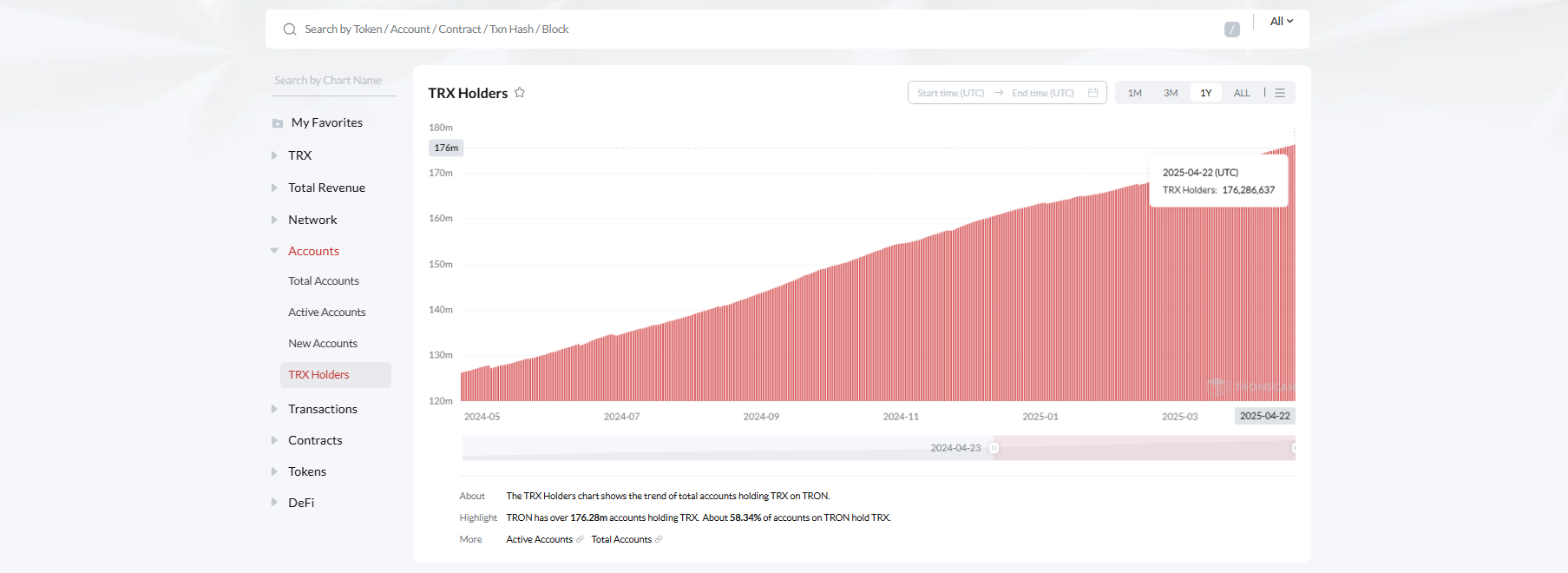
The number of TRON users exceeds 300 million users.
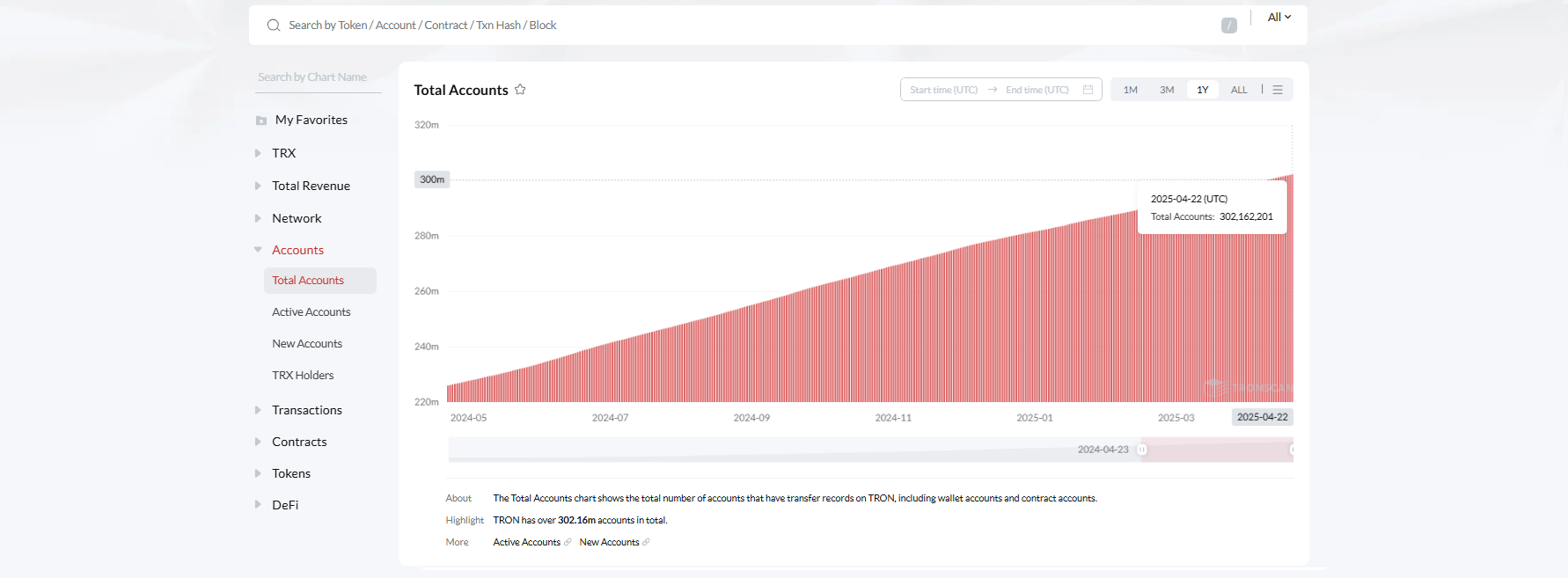
- Confirmation speed of one transaction in TRX: from 1 to 3 seconds;
- TRON network throughput: up to 2,000 transactions per second (TPS);
- Commissions: when using intranet resources, some of the lowest.
A more attractive feature of TRON is the energy generation, which allows users to reduce their fees.
TRX's daily energy consumption exceeds hundreds of millions of units.
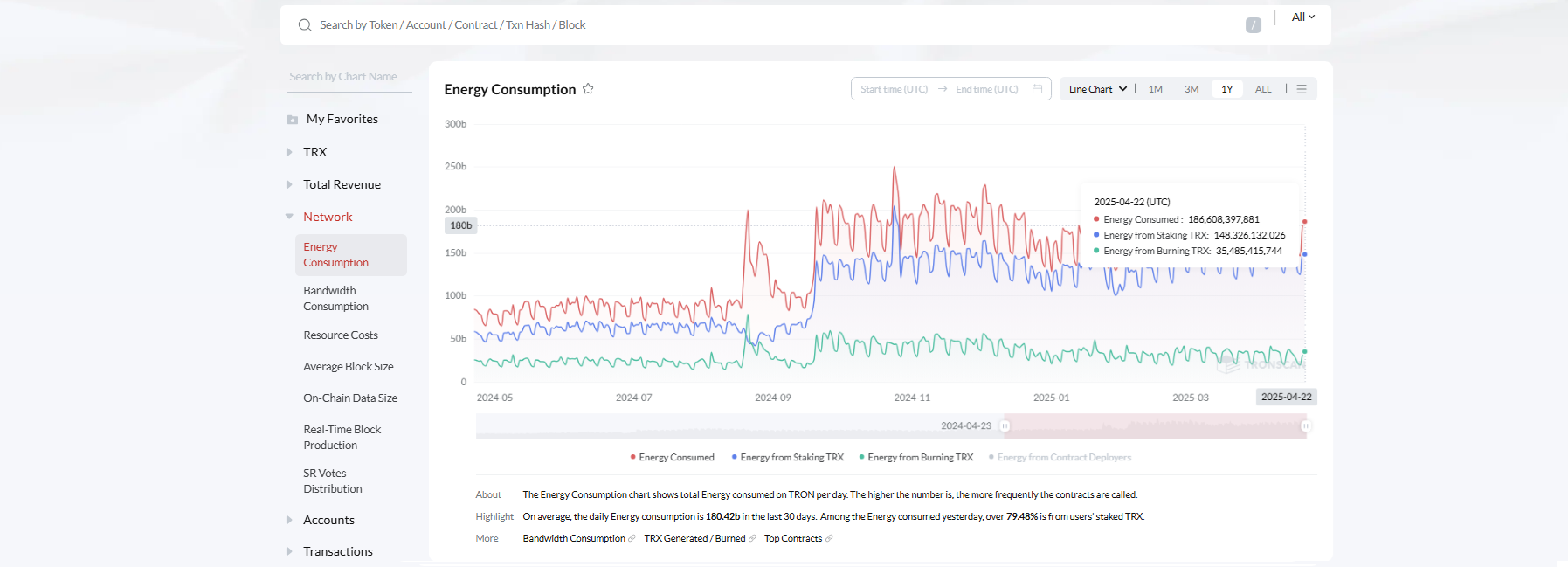
TRON's scalability allows it to initiate thousands of transactions simultaneously without slowing down or increasing the cost of operations. This is especially relevant for crypto businesses and DeFi protocols that interact with mass payment flows.
How to Check TRON Transaction: The Best Tools
To get detailed information about transactions in TRON, users and developers use tools:
- Tronscan. Universal blockchain explorer for the TRON network. Allows you to search by address, hash, token, smart contract. Supports block visualization, full history of wallet and address activity;
- TRONLink Wallet. The official TRON cryptocurrency wallet, where you can track all incoming and outgoing transactions, including staking and interaction with dApps;
- TR.ENERGY Wallet. A non-custodial crypto wallet based on the TRON blockchain, which allows users to track transactions.
- TRONGrid API. For developers. The service allows you to integrate verification and tracking of TRON transactions into third-party services, bots, payment gateways and interfaces;
- TokenView. A feature-rich blockchain explorer with TRON support. Convenient for holders and traders tracking large volumes of TRX and TRC-20 token transfers.
These services and platforms allow you to track the status of any operations in TRX in real time, receive detailed information about the resources involved, the addresses involved and the results.
Transfers in the Tron network: advantages and features of use
The TRON network has established itself as one of the most efficient blockchain ecosystems for exchanging data and cryptocurrencies. High transaction processing speeds, minimal fees, and the convenience of user wallets make TRON transactions attractive to both private users, traders, and larger investors and businesses.
Why Transfers on the Tron Network Are Beneficial for Users
- Low fees compared to other blockchains TRON's architecture allows transactions to be made using in-network resources; Energy and Bandwidth. These resources allow users to significantly reduce their fees;
- Instant confirmation Transactions on the TRON network are confirmed within 3-7 seconds, ensuring almost instant transfers;
- Availability and scalability TRON processes thousands of transactions per second without overloading the network. This allows for large volumes of transactions to be sent with minimal delays;
- Blockchain reliability TRON ensures complete transparency and data security due to the high level of transaction encryption and the impossibility of replacing records in the blockchain. Any transfer can be verified through Tronscan and ensure its authenticity;
- Sustainable Market Value TRON has earned its leading position in the market due to its high investment potential. TRX can be used not only for exchanges, but also as a high-yield asset with minimal risks.
How to Use TRX Effectively for Transfers
In order to use the maximum potential of TRX, it is worth following a number of recommendations:
- Freeze TRX in staking to get free resources: energy and bandwidth allow you to make transfers without excessively high fees;
- Use native TRON wallets, including TR.ENERGY Wallet, TRON Link. They provide compatibility with dApps, TRC-20 tokens, and the ability to track transactions;
- Before sending or receiving funds, check wallet addresses - transactions in blockchains cannot be cancelled or reversed;
- Track TRON transactions through official resources and services like Tronscan or alternative explorers to verify the execution status;
- Optimize fees using network resources: Energy and Bandwidtwh. In cases where there is not enough energy, it can be buy fast in TR.ENERGY;
- Integration with dApps: TRX can be used as a means of payment in games, NFT markets, DeFi platforms and other applications in the TRON ecosystem.
These approaches allow transfers on the TRON network to be used not just as a means of transferring assets, but also as part of a broader decentralized economy.
Conclusion
The TRON network maintains its leadership in the field of cheap and fast transfers in the blockchain. DPoS technology, powerful infrastructure and convenient tools for verifying TRON transactions make this platform especially attractive to active cryptocurrency users. Using TRX effectively and competently, users can not only send funds, but also participate in the global development of decentralized finance, Web3 products. In turn, TRON offers a simple, but technologically advanced alternative to traditional payment systems in the blockchain space.
